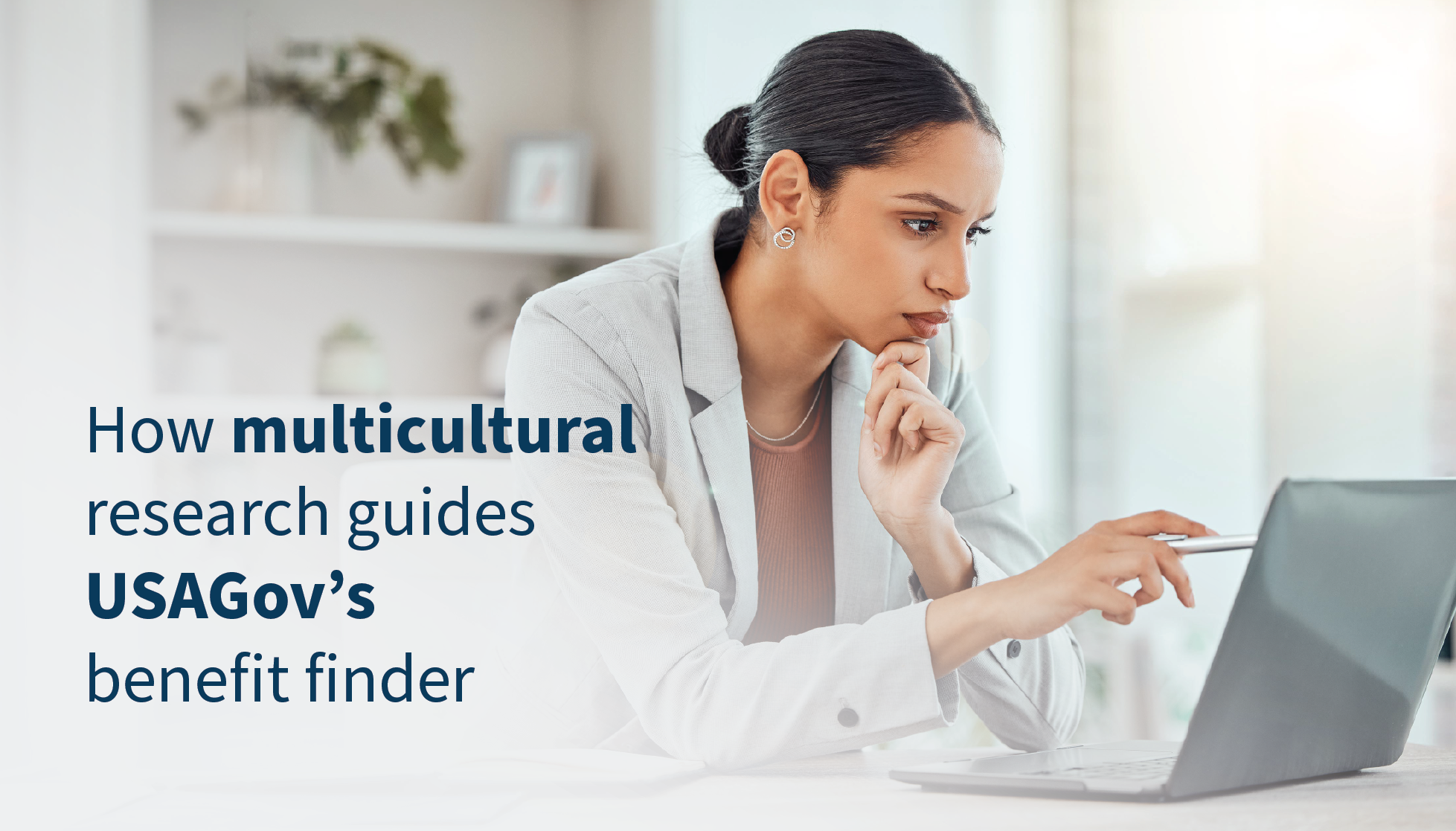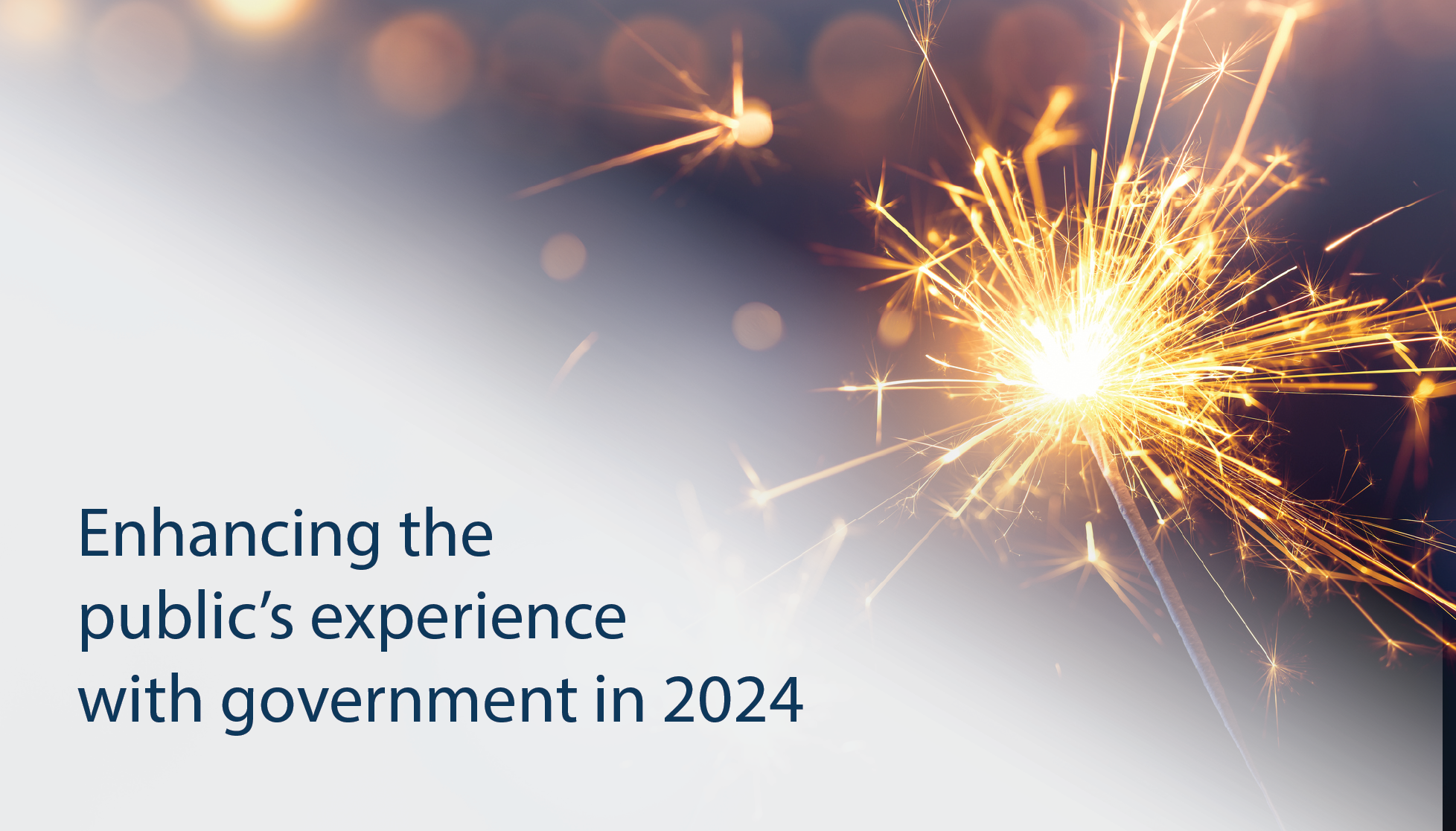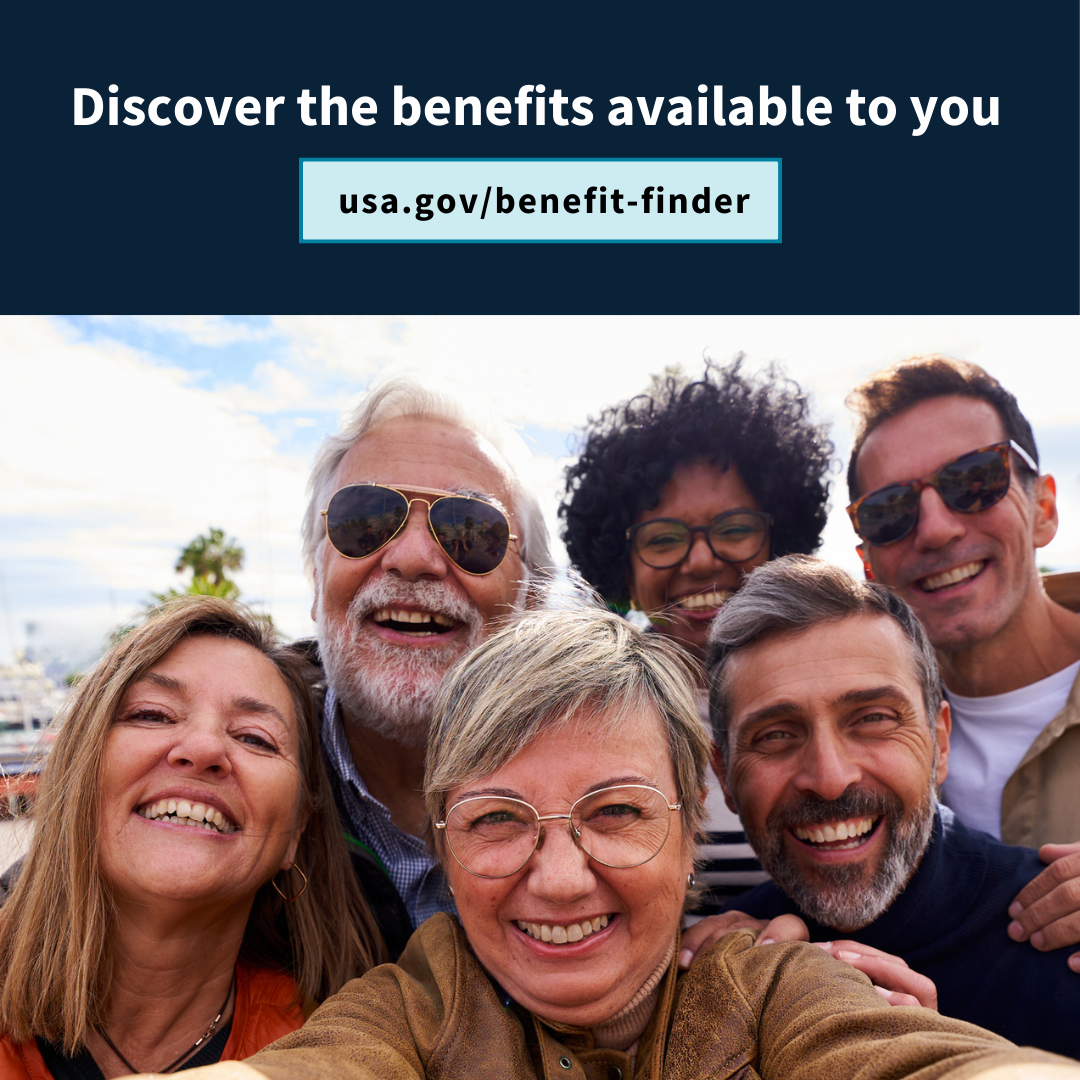As we continue to develop content for USAGov’s benefit finder, we work hard to tailor the experience for our Spanish-speaking users. Rather than a straight translation from English, we transcreate Spanish language content to catch the nuances of both language and culture. The process begins with our iterative multilingual user research.
Bilingual support teams
We created and continue to improve the benefit finder with a fully bilingual, cross-functional team of native and fluent English and Spanish speakers. The team includes a bilingual researcher, data analyst, designer, content strategist, and project manager. The ongoing collaboration among team members helps us provide feedback and analyze user sessions in English and Spanish in real time. It also embeds a multicultural editorial process throughout the benefit finder’s development cycle.
Dual-track language research
User research has been essential in aligning the benefit finder with the needs and cultural nuances of our English and Spanish-speaking audiences. We have tested early, often, and iteratively. From the inception of the benefit finder, we adopted a dual-track research approach, testing in both languages. We delved into users' perceptions of the benefit finder, their past experiences using government sites, and how the benefit finder compares with their expectations. We also prioritized mobile testing since it represents more than 60% of traffic to USAGov’s websites.
ABC research
Showing research participants more than one potential version of the benefit finder’s content helped uncover observations we wouldn’t find with typical user testing. In traditional A/B testing, we would show each participant only one of two versions of a design. Participants would provide minor recommendations but did not suggest significant changes. While this approach confirmed the content's accuracy, cultural relevance, and readability, it limited feedback to just that one version. Using ABC testing methodology, we showed two to four versions to each research participant. With this approach, we gathered comments we may not have otherwise. This more nuanced feedback led us to create noticeably different content for each language. Spanish speakers, for example, preferred longer and more polite content, with extra empathetic lines and words like “please.” English speakers preferred a minimalistic approach with only the necessary content and no extra niceties, like the word “please.”
Diversity screening
A key aspect of our research was testing with diverse groups of people who represent the breadth of the benefit finder’s audience. We used screening criteria to recruit a variety of participants in the areas of gender, age, and geographic distribution. And we reached out to underrepresented groups like people with disabilities. We also screened for people who recently applied or were looking to apply for benefits or who had gone through one of the life events on the benefit finder: the death of a loved one, retirement, or disability. Emulating realistic scenarios helped us gather more realistic feedback. For example, a participant who lost a loved one could empathize better with others going through that process and how they would interact and feel when using the benefit finder.
Recruiting diverse Spanish speakers was also important. A Spanish speaker can encompass a wide range of language proficiency and cultural diversity. The Latino and Hispanic populations in the U.S., sometimes referred to as a mosaic, are diverse, representing many cultural subgroups and different forms of the Spanish language. Because of this, we intentionally recruited users who were fluent in Spanish and represented the broader Spanish-speaking communities. Our research included U.S.-born and immigrant users from Mexico, the Caribbean, Spain, and Central and South America. Casting a wider net allowed us to have a broader range of feedback to understand the needs of specific user segments. It also helped us disaggregate data across different benefit screening criteria.
Recruitment challenges
The onboarding process for the research platform we were using seemed complex and time-consuming to users, and it was only available in English. This limited us to testing people who could speak English, had a high commitment to testing, or had high digital literacy. But this didn’t fully represent the average user for the benefit finder, especially in Spanish.
Another related challenge was that although we screened to recruit fluent and native Spanish speakers, most Spanish-speaking participants were proficient in English and preferred using websites in English because they felt they were more accurate, clearer, and easier to use. While these participants provided helpful feedback about the product's language and cultural aspects, we were mindful that they didn’t represent a typical user who requires a Spanish site.
Cognizant of this, we implemented several approaches to address these barriers. We added extra screening to ensure that we recruited Spanish speakers with limited English proficiency. We relied on community connections and local networks and attended in-person events to recruit participants we would not encounter through commercial research platforms. To help onboard participants, we created step-by-step Spanish documentation to guide them in navigating the research platform.
Ongoing research
Since launching the benefit finder in January 2024, we’ve continued the multicultural process of testing iterative product improvements and new features of the benefit finder. We recently launched USAGov's user research recruitment page for visitors to sign up as potential testers. Having direct opportunities to recruit and build a custom network will help ensure that we recruit the right users and improve the quality of research feedback to help us make government benefit programs easier for everyone to find.



_v003.png)
